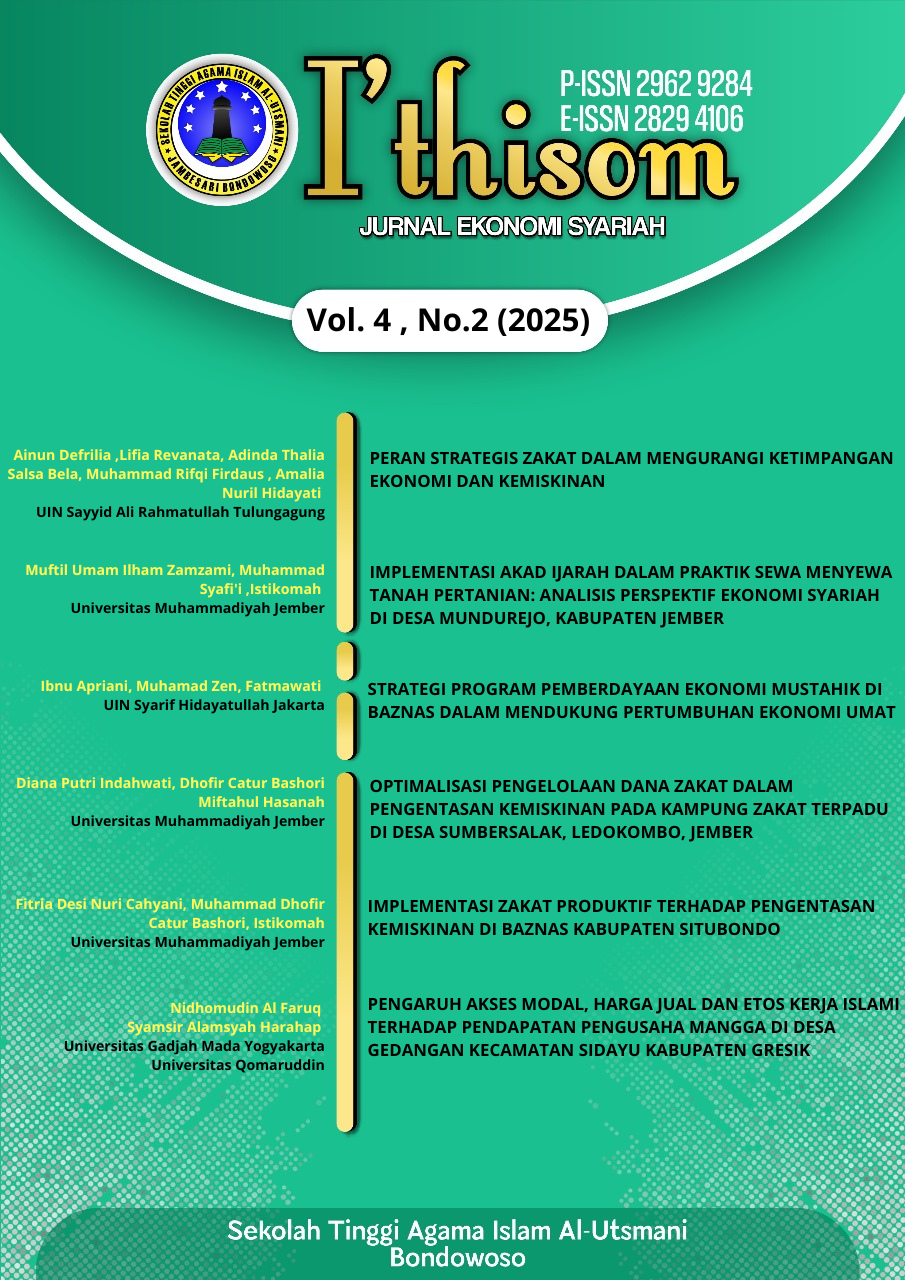STRATEGI PROGRAM PEMBERDAYAAN EKONOMI MUSTAHIK DI BAZNAS DALAM MENDUKUNG PERTUMBUHAN EKONOMI UMAT
DOI:
https://doi.org/10.70412/its.v4i2.211Keywords:
Economic Empowerment, Mustahik, Strategy, BAZNAS, Productive ZakatAbstract
This study aims to analyze the strategic programs for empowering mustahik (zakat recipients) implemented by the National Zakat Board (BAZNAS) in supporting the economic growth of the Muslim community. Economic empowerment through productive zakat is considered one of the alternative solutions in efforts to alleviate poverty and enhance the economic independence of mustahik. This research adopts a descriptive qualitative approach using the library research method, which involves collecting data from various sources such as books, scientific journals, and relevant documents. The findings indicate that the strategies implemented by BAZNAS include problem identification and mapping of mustahik, the creation of business opportunities through capital assistance to Micro, Small, and Medium Enterprises (MSMEs), the development of productive enterprises, and the establishment of networks among small entrepreneurs. These strategies have proven effective in gradually improving the standard of living of mustahik, enabling them to achieve economic self-sufficiency. With a structured and sustainable implementation, the program significantly contributes to the economic growth of the Muslim community and facilitates the transformation of mustahik into muzakki (zakat givers).
Downloads
Published
How to Cite
Issue
Section
License
Copyright (c) 2025 I'THISOM : Jurnal Ekonomi Syariah

This work is licensed under a Creative Commons Attribution-NonCommercial-ShareAlike 4.0 International License.




















